Discovering the depths of the ocean unveils some of the most enigmatic and rare creatures on Earth—octopuses. With their exceptional intelligence, remarkable ability to change color and texture, and often elusive nature, octopuses capture the imagination like few other animals. This article delves into 15 of the rarest octopus species in the world, exploring their unique characteristics and the mystique surrounding their oceanic lives.
Graneledone Boreopacifica
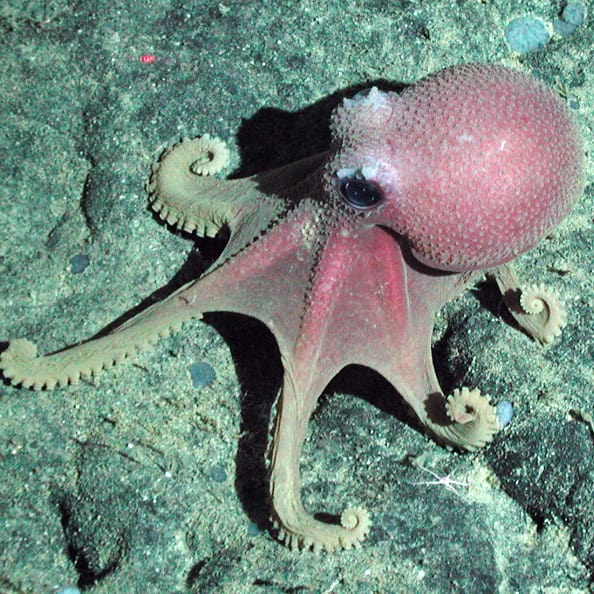
This deep-sea species is known for its remarkable maternal sacrifice. Found in the frigid waters off the coast of California, the Graneledone Boreopacifica guards her eggs for up to 53 months without leaving or feeding, the longest brooding period ever recorded among marine animals. This deep reddish-brown octopus survives on its stored energy reserves during this period, a testament to its incredible adaptation to the deep-sea environment.
Larger Pacific Striped Octopus
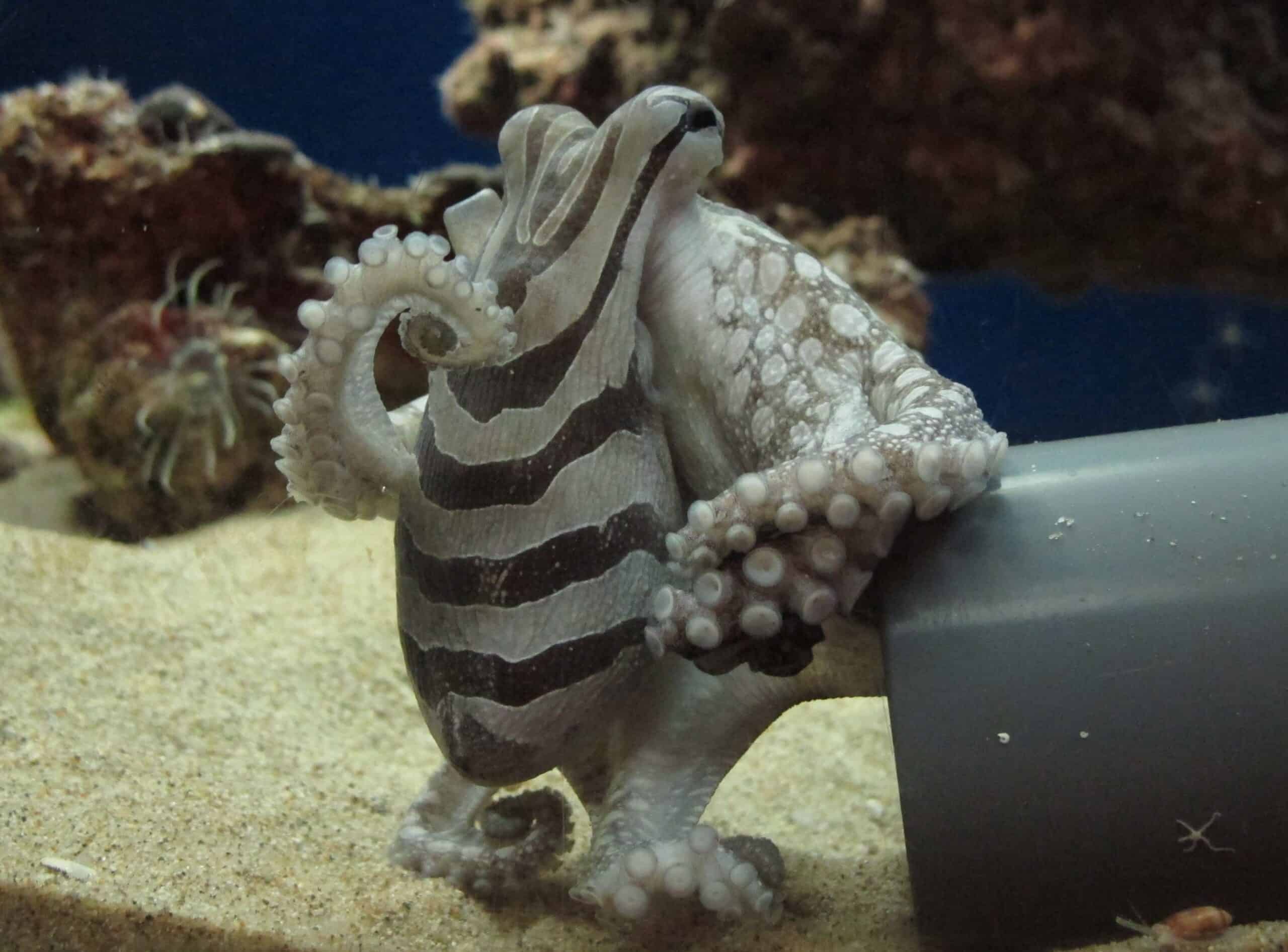
Discovered off the coast of Nicaragua, this species exhibits unusual behaviors, including social interactions and communal living, which are rare among typically solitary octopuses. They exhibit unique reproductive strategies, such as multiple mating sessions over a lifetime, which contrast with the more common single reproductive event in other species.
Blue-Ringed Octopus

Although small, this octopus carries enough venom to kill 26 adult humans within minutes, making it one of the deadliest reef inhabitants in the ocean. The blue-ringed octopus is not only rare but also extremely dangerous due to its neurotoxic venom, which it uses as a defense mechanism against potential threats.
Argonaut Octopus
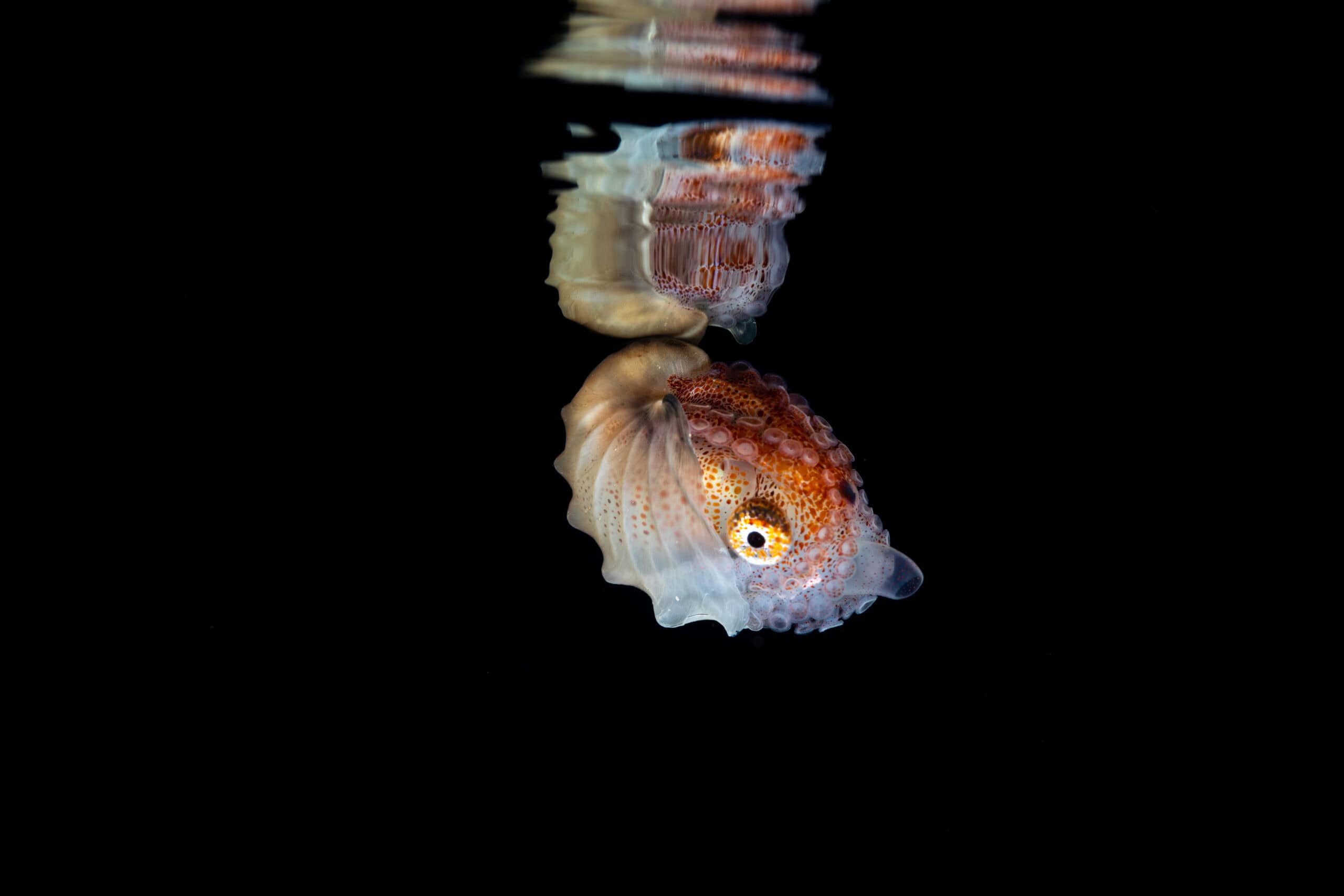
Image Editorial Credit: Gerald Robert Fischer / Shutterstock
Also known as the paper nautilus, females of this species create a thin, calcareous shell to hold their developing eggs, a unique behavior among octopuses. The males are dramatically smaller, seldom seen, and die shortly after mating. Argonauts are pelagic, drifting in the open ocean’s upper layers, rarely seen by human eyes.
Deep-Sea Octopus

These octopuses are adapted to life in extreme environments, with adaptations like slow metabolism and gelatinous tissues. They are known to inhabit depths that are challenging to reach for research and exploration, contributing to their rarity and mystery.
Wunderpus Photogenicus

Characterized by its striking pattern of white markings on a reddish-brown body, the Wunderpus Photogenicus can alter its skin color and texture to blend into its surroundings, making it a master of camouflage. This octopus is often found in sandy and muddy substrates in shallow waters of the Indo-Pacific.
Mimic Octopus

This species takes camouflage to the next level by not only changing its color but also mimicking the shapes and movements of other more dangerous marine animals such as lionfish, sea snakes, and flatfish, an adaptation that provides protection from predators.
Coconut Octopus
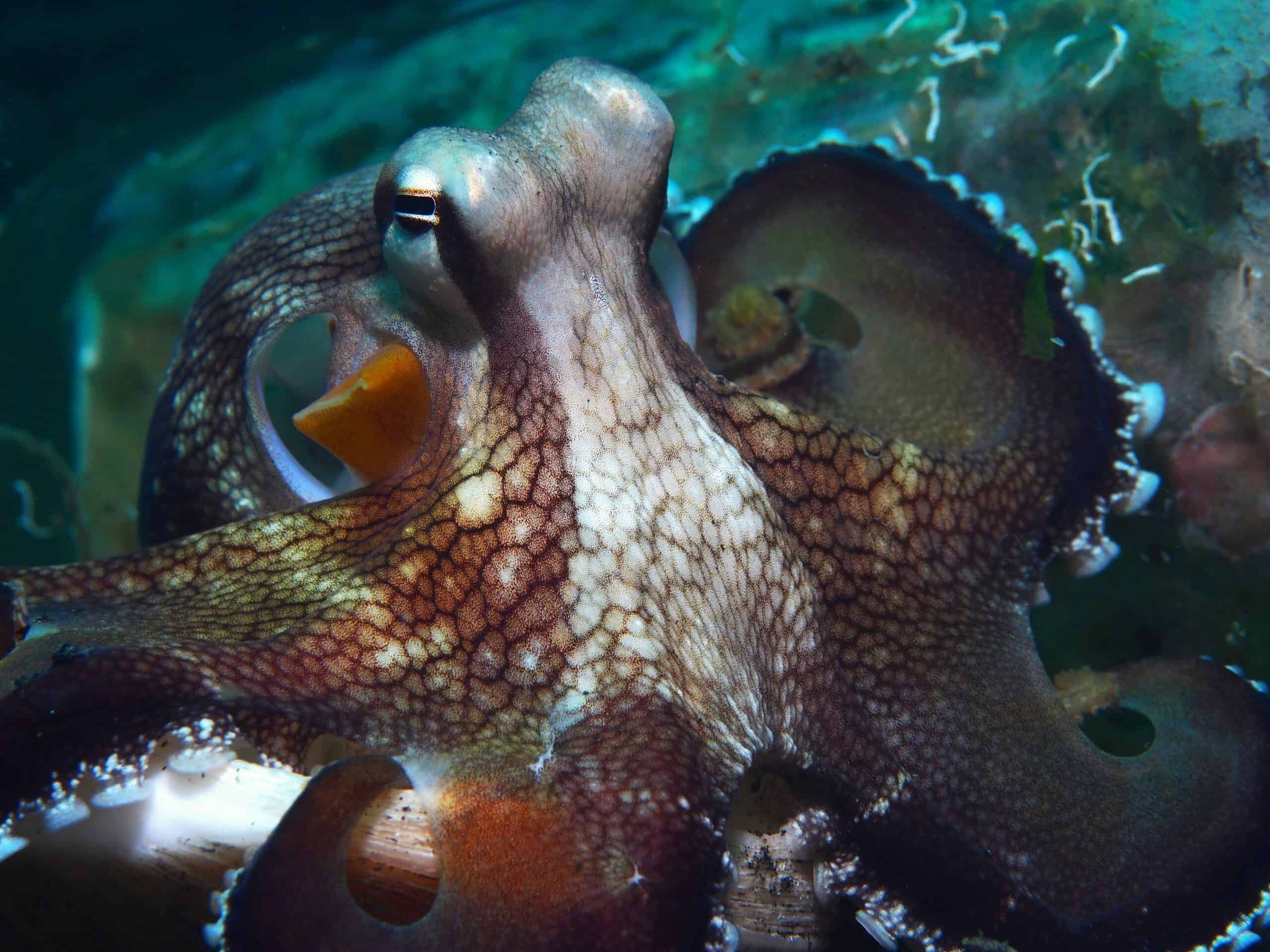
Renowned for its use of tools, the coconut octopus uses coconut shells and seashells to hide from predators, making it one of the few invertebrates known to use tools. Found in the western Pacific Ocean, this species displays a high level of intelligence and problem-solving skills.
Giant Pacific Octopus

Image Editorial Credit: Karen / Wikimedia Commons
This species is the largest octopus, with individuals recorded weighing up to 272 kilograms and measuring 9 meters across. Its size, coupled with a relatively short lifespan of just 3 to 5 years, makes each sighting a rare and significant occurrence.
Dumbo Octopus
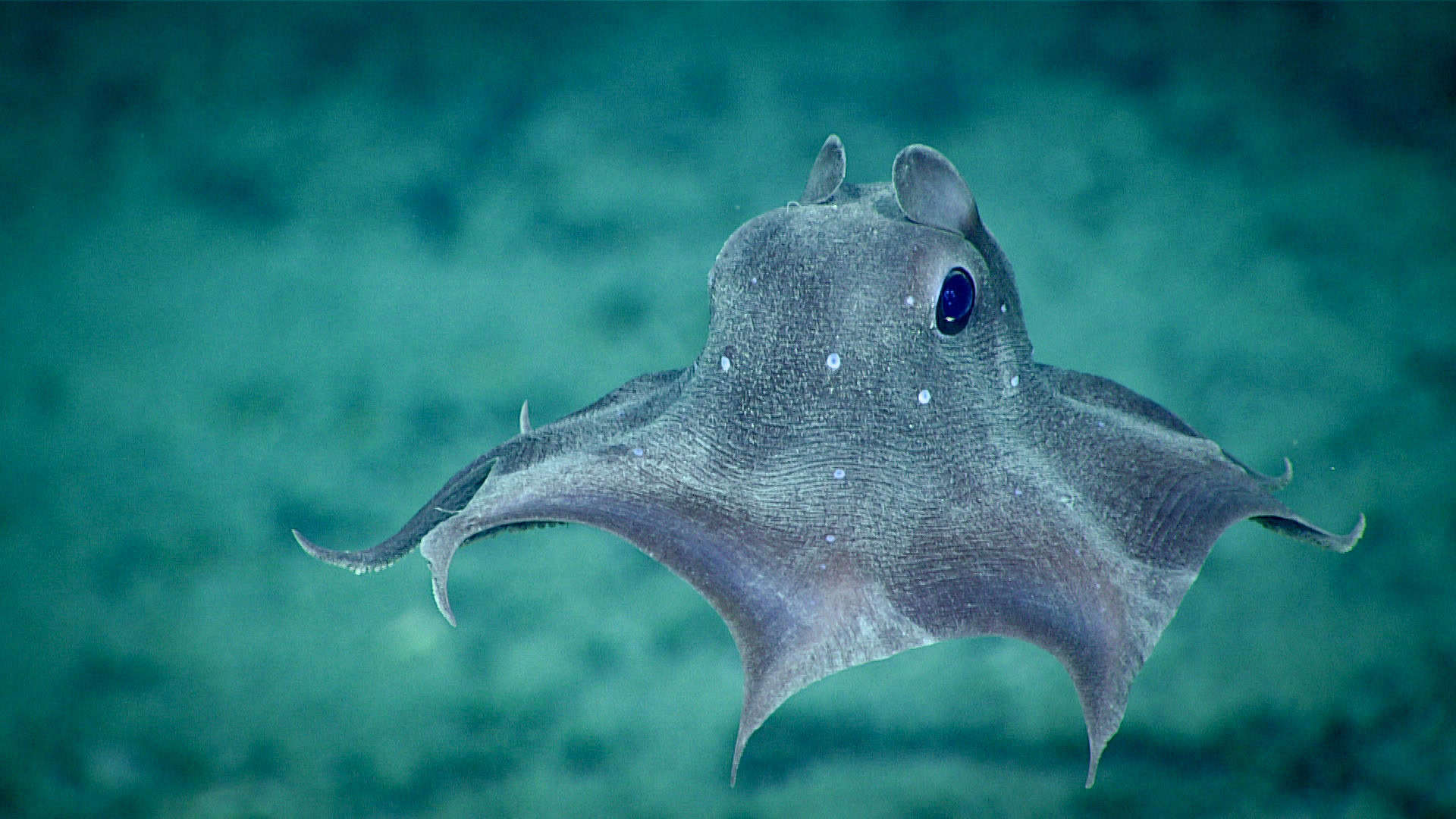
Named for its ear-like fins that protrude from the top of its head, the Dumbo octopus flaps these fins to propel itself through the water. Found at extreme depths up to 7,000 meters, this species is rarely seen and is known for its adorable demeanor.
Ghost Octopus
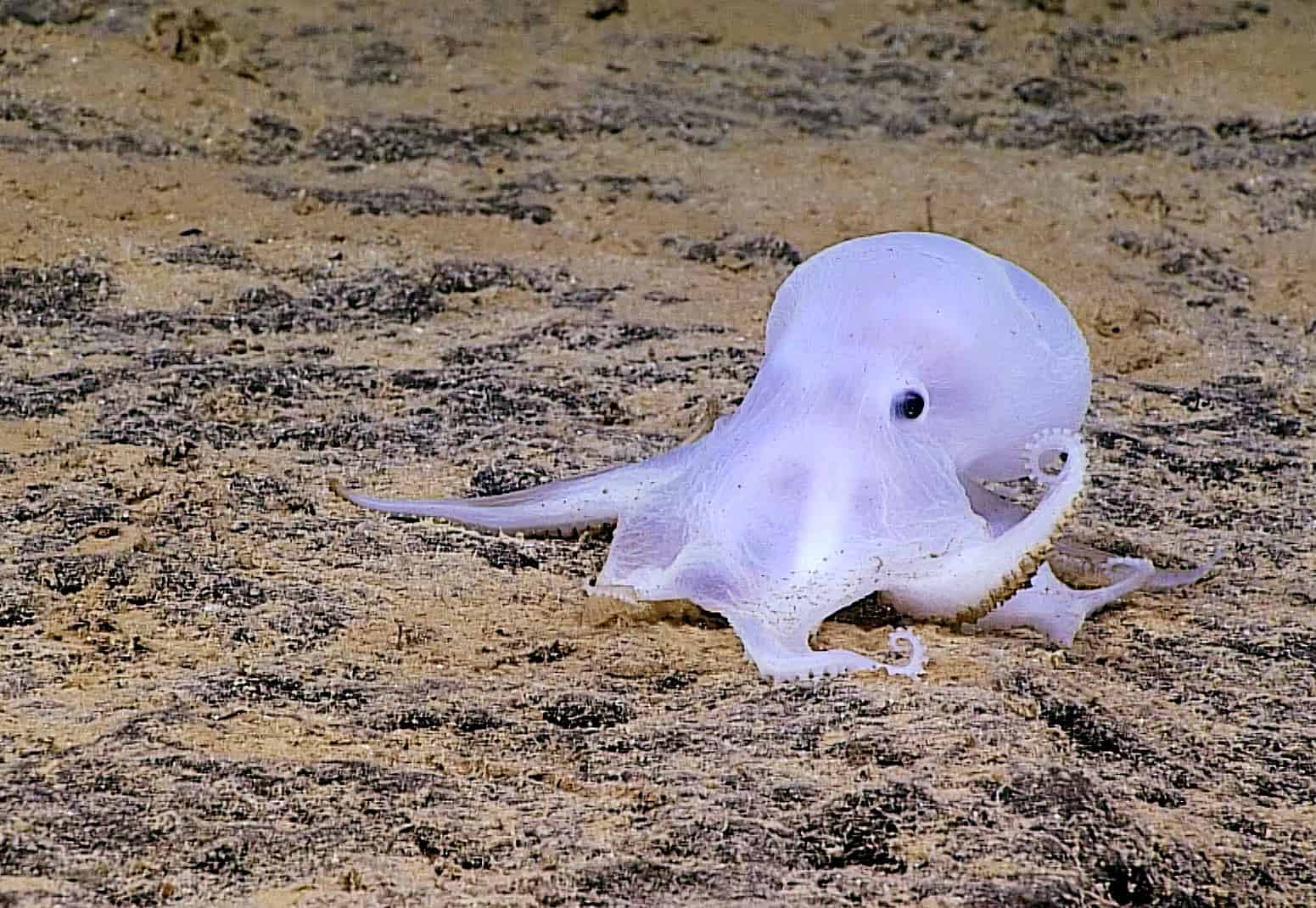
This pale, almost translucent species was discovered only in 2016 near Hawaii. Its ghost-like appearance helps it avoid detection in the sparse deep-sea environment, making it a remarkable discovery in recent oceanographic research.
Algae Octopus
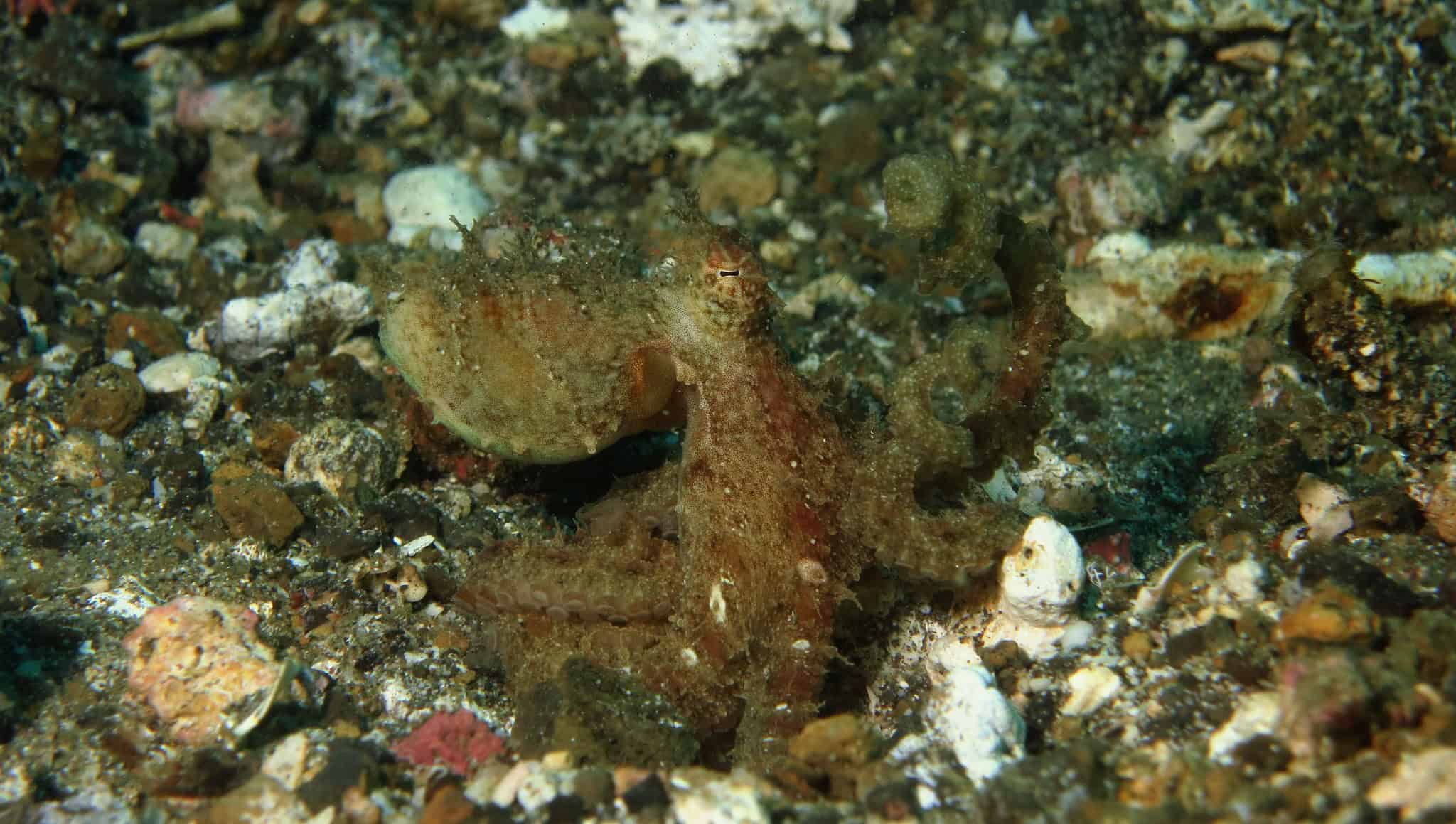
The algae octopus is a master of disguise, utilizing its ability to mimic the appearance of algae to evade predators. It inhabits shallow waters and is known for its small size and greenish color, which blends perfectly with its surroundings.
Maori Octopus
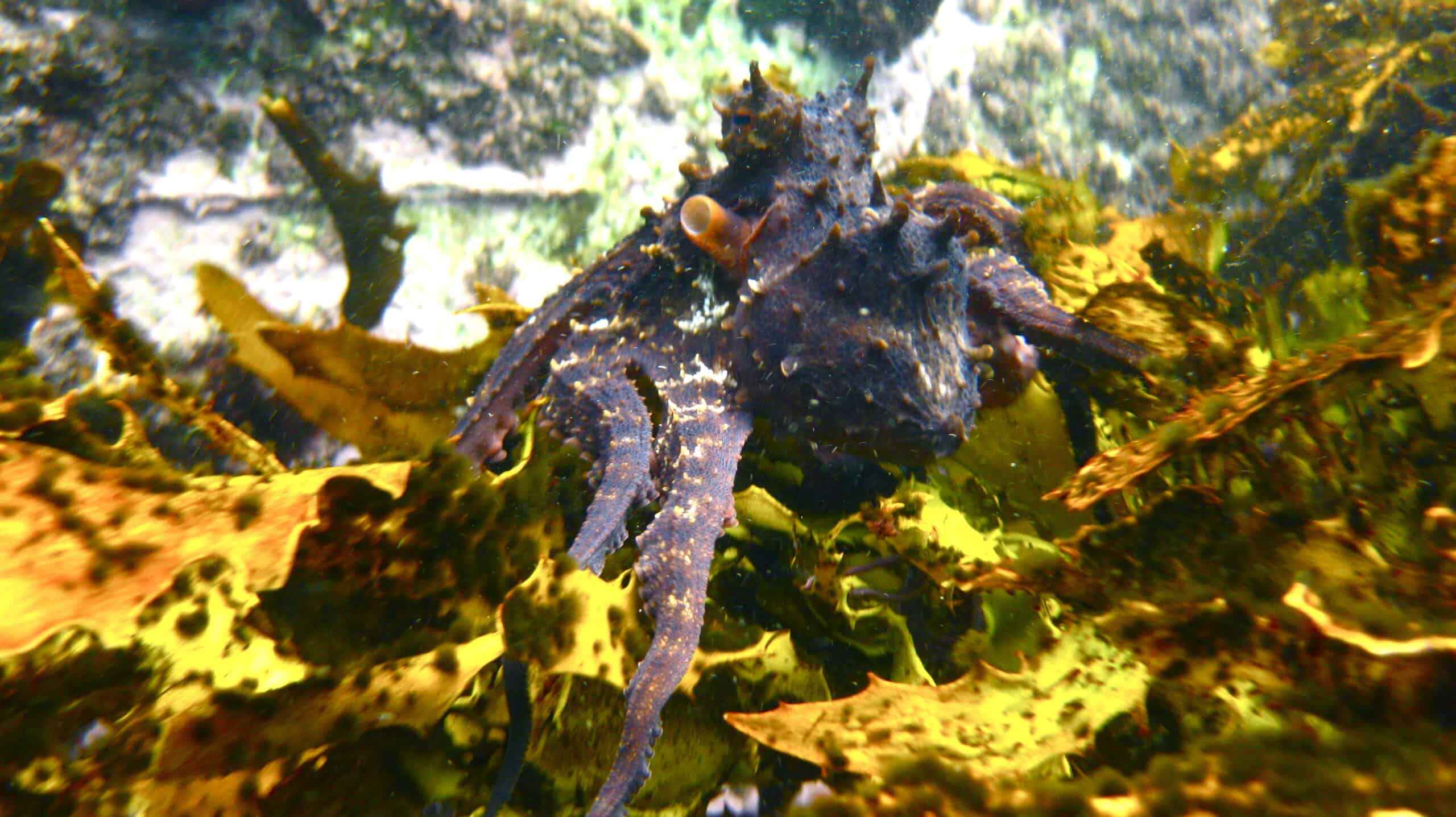
Known for its considerable size and strength, the Maori octopus is one of the larger octopus species, capable of reaching up to 15 kilograms in weight. It is a formidable predator, feeding on a variety of fish and crustaceans.
Pinnoctopus Cordiformis
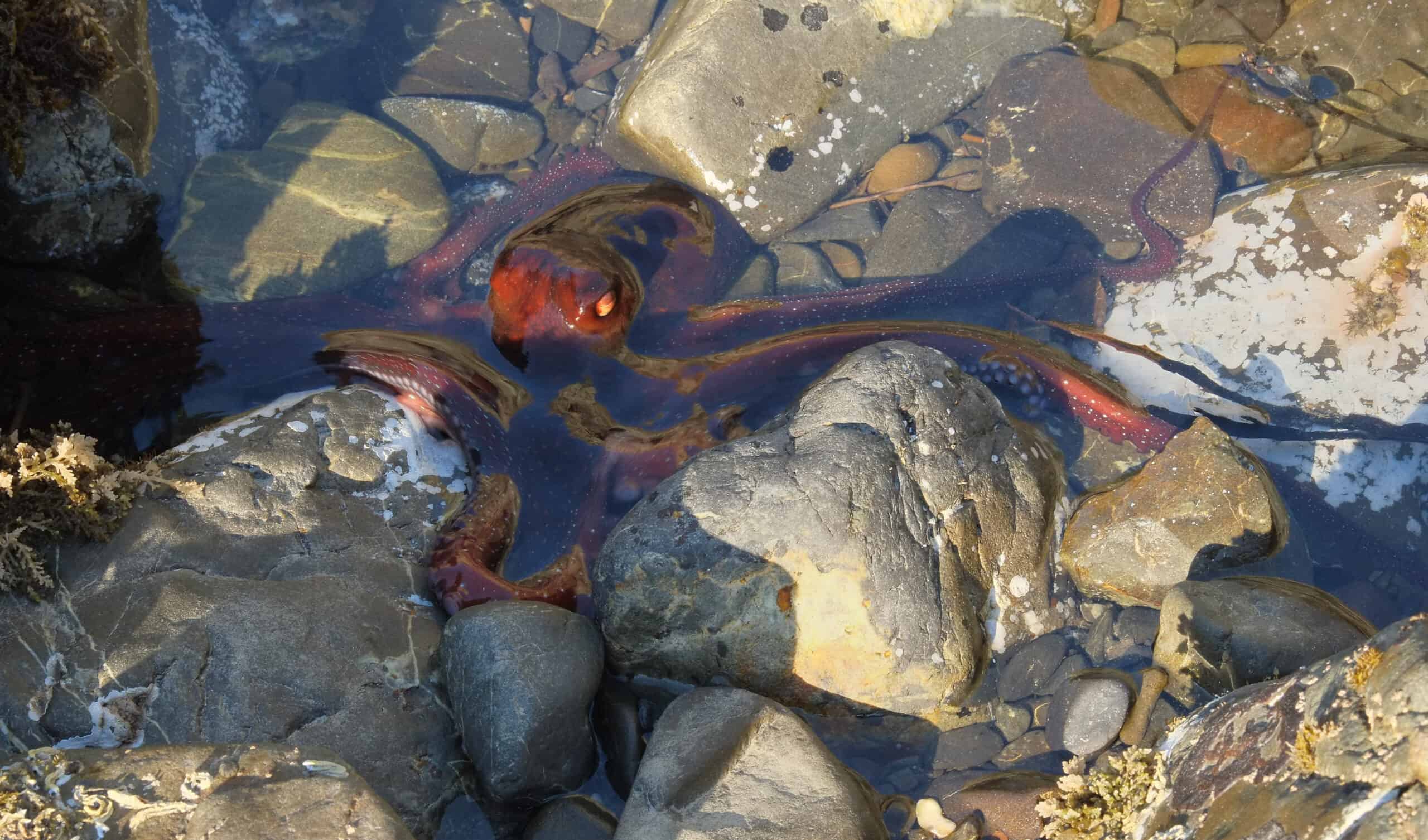
This New Zealand native is notable for its heart-shaped body and robust nature. It inhabits sandy and muddy sea floors where it preys on small fish and crustaceans, often burying itself for camouflage.
Southern Sand Octopus
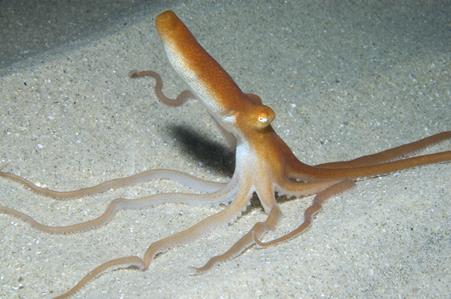
Unique for its burrowing behavior, the Southern Sand Octopus uses jets of water to liquefy the sea floor, allowing it to create a sandy burrow in which to hide. This behavior, coupled with its sandy coloration, makes it an elusive target for both predators and researchers.
This article originally appeared on Rarest.org
More from Rarest.org
10 Rarest Crystals in the World
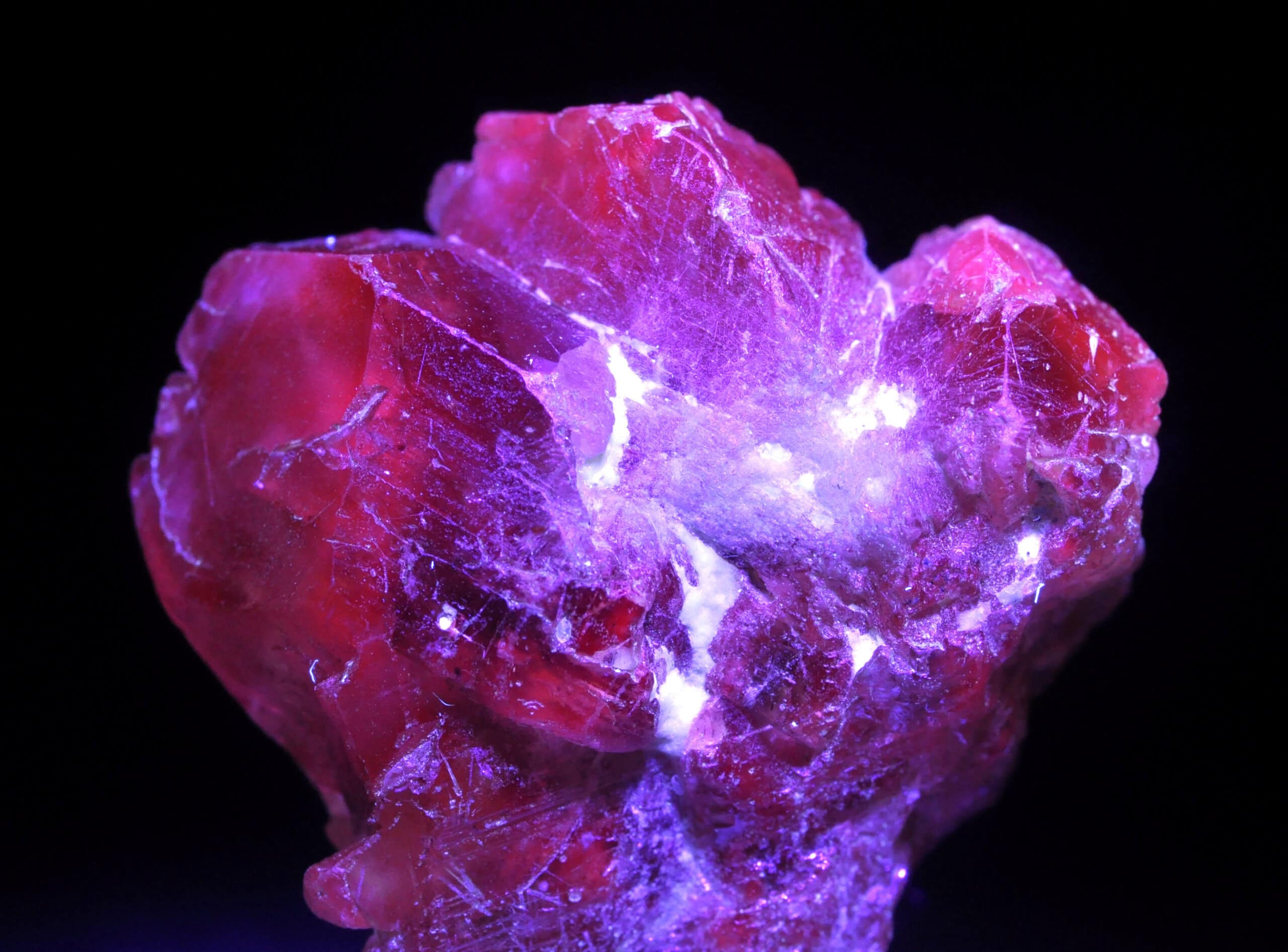
Crystals are some of the most widely collected items in the world because of their beauty. In recent years, crystal collecting has also increased in popularity because of the rise of alternative medicine. Read More
15 Rarest Metals in the World

In the realm of materials science and industry, certain metals stand out for their rarity, unique properties, and crucial roles in various technological advancements. Read More
1960 Lincoln Penny Value Guide

The 1960 penny is a 1-cent coin produced by the US Mint in 1960. As a 60-plus-year-old coin, the 1960 penny is quite popular among collectors. Read More
